Frye Decision in BMW Case Results in Exclusion of Plaintiff’s Experts
By admin on January 17, 2013
In a thoughtful decision handed down in Reeps v. BMW of North America, LLC, 2012 N.Y. Slip Op. 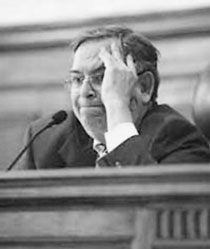 33030(u), on December 16, 2012 in New York County Supreme Court, the Hon. Louis B. York excluded the expert testimony of plaintiff’s two key causation experts in a toxic tort case where plaintiff alleged that a child’s birth defects were attributable to the mother’s in utero exposure to gasoline vapors.
33030(u), on December 16, 2012 in New York County Supreme Court, the Hon. Louis B. York excluded the expert testimony of plaintiff’s two key causation experts in a toxic tort case where plaintiff alleged that a child’s birth defects were attributable to the mother’s in utero exposure to gasoline vapors.
 In an earlier article on this blog about the same case, we examined the decision by the First Department, on an interlocutory appeal, which determined that: (1) defendants had failed to demonstrate that the infant’s parents disposed of their BMW with knowledge of its potential evidentiary value; and (2) that plaintiff’s claims against the BMW dealer, sounding in product liability and breach of implied and express warranty, should be dismissed because the dealer was a service provider, not a product seller.
In an earlier article on this blog about the same case, we examined the decision by the First Department, on an interlocutory appeal, which determined that: (1) defendants had failed to demonstrate that the infant’s parents disposed of their BMW with knowledge of its potential evidentiary value; and (2) that plaintiff’s claims against the BMW dealer, sounding in product liability and breach of implied and express warranty, should be dismissed because the dealer was a service provider, not a product seller.
In that article, we also discussed plaintiff’s burden in having to prove general causation at trial, that is, whether exposure to chemical components in gasoline fumes have been associated in the scientific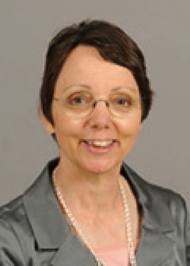 literature with cerebral palsy and the other abnormalities alleged. We discussed that if plaintiff is able to prove general causation, she will then have to prove specific causation, that is, whether the dose and duration of exposure to the purported teratogen was sufficient to cause the specific birth defect.
literature with cerebral palsy and the other abnormalities alleged. We discussed that if plaintiff is able to prove general causation, she will then have to prove specific causation, that is, whether the dose and duration of exposure to the purported teratogen was sufficient to cause the specific birth defect.
In a Frye decision (tantamount to a dismissal), Judge York analyzed plaintiff’s expert disclosures made pursuant to CPLR 3101(d) for Shira Kramer, Ph.D., and Linda Frazier, M.D., M.P.H. Both experts submitted detailed reports. In support of its Frye motion, BMW submitted affidavits by its own experts, Anthony Scialli, M.D. and Peter Lees, Ph.D. Dr. Scialli is an OB-GYN and reproductive toxicologist. Dr. Lees is a specialist in industrial hygiene and environmental health science. The experts on both sides of the dispute were highly credentialed with impressive CV’s.
The timeline of events leading up to the filing of the case is as follows:
1991-In March and again in November, the Reeps bring their 1989 BMW 525i to Hassel Motors, a licensed BMW dealer, to fix an exhaust odor inside the car. Dealer fails to identiify an exhaust odor in March, but later identifies problem as a split fuel hose and repairs it under warranty.
1992-In May, Sean Reeps is born with birth defects, including cerebral palsy, which plaintiffs attribute to Debra Reep’s inhalation of gas fumes early in her pregnancy.
1994-BMW recalls BMW525i vehicles due to a safety defect that caused odor due to feed fuel hose.
Plaintiff’s experts attributed the child’s birth defects to gasoline vapors his mother inhaled during the first trimester of her pregnancy while driving her BMW. Dr. Kramer offered the opinion that gasoline vapors and specific chemical constituents of gasoline, such as toluene and other solvents, are casually related to an elevated risk of birth defects among children exposed to these chemicals in utero. Dr. Kramer applied a “weight-of-evidence” assessment of the association between exposure to gasoline vapors, and the chemical constituents of gasoline vapors, and an increased risk of birth defects and other adverse birth outcomes. She based her assessment on the epidemiological, medical and toxicological literature.
 For her part, Dr. Linda Frazier opined that the mother was exposed to developmental hazards due to substances and compounds found in gasoline vapors, which included toxic substances capable of severely damaging a developing fetus during the first trimester. She was able to determine that the exposure levels by the mother to gasoline were high, based upon her reported symptoms of headache, nausea and irritation of the throat. Studies have found that these symptoms occur at gasoline vapor concentrations of at least 1,000 ppm.
For her part, Dr. Linda Frazier opined that the mother was exposed to developmental hazards due to substances and compounds found in gasoline vapors, which included toxic substances capable of severely damaging a developing fetus during the first trimester. She was able to determine that the exposure levels by the mother to gasoline were high, based upon her reported symptoms of headache, nausea and irritation of the throat. Studies have found that these symptoms occur at gasoline vapor concentrations of at least 1,000 ppm.
As noted by the Court, Dr. Scialli concluded that no scientific publication has ever established a causal relationship between the inhalation of gasoline during pregnancy and the birth defects diagnosed in Sean Reeps. Further, he criticized Dr. Kramer’s reliance on two human case report articles suggesting an association between leaded gasoline and birth defects for lack of “specificity.” The adverse outcomes in those studies were different from those in Sean Reeps’ case. Other studies cited by plaintiff’s experts discuss the effects of gasoline’s ingredients (such as toluene, ethylbenzene, zylene and benzene) on reproductive and developmental outcomes. However, taken together, these components account for no more than 2% gasoline vapors. To have inhaled a significant amount of these gasoline components would have had fatal consequences for the mother.
Finally, Dr. Scialli asserted that plaintiff’s experts failed to consider causes other than gasoline vapor inhalation for the developmental delays diagnosed in Sean Reeps. For example, intrauterine infection is among the most common causes of cerebral palsy. Mrs. Reeps had a history of herpes simplex infection and a rash during her pregnancy.
In ruling on the motion, the Court made several significant holdings, which defense lawyers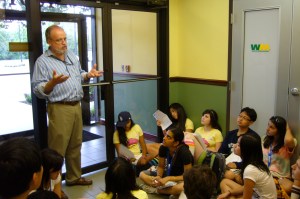 should find useful. My observations about some of the notable points in Judge York’s decision are as follows:
should find useful. My observations about some of the notable points in Judge York’s decision are as follows:
1. Plaintiff contended that a motion for a Frye hearing should be precluded by the procedural posture of the case. Plaintiff pointed out that defendant had already made and lost a summary judgment motion. In response, the Court determined that a Frye hearing is evidentiary, separate from dispositive motions, and can be held prior or during the trial. Thus, the Court found it appropriate, at this juncture in the case, to consider a Frye challenge. Although trial courts may apply different procedural rules, it may be not always be necessary for the defendant to mount Frye challenge as part of a dispositive motion;
2. Under Frye, it is not sufficient to merely utilize accepted methodology in reaching an opinion. Rather, it is necessary that the accepted technologies be properly performed and generate results accepted as reliable within the scientific community. Plaintiff’s experts, Judge York determined, were merely playing lip service to accepted methodology “while pursuing a completely different enterprise”. Thus, the court should explore not just whether plaintiff’s expert cites to an accepted methodology, but whether than methodology was properly applied by the expert in reaching a causation opinion;
3. Plaintiff’s failure to submit affidavits from their experts in opposing defendant’s motion proved fatal in hindsight. In bringing a Daubert or a Frye motion, or in responding to a Daubert or a Frye motion, it is generally sound practice to submit an expert affidavit on behalf of the challenged expert to either explain, or to bolster, the expert’s opinion. Here, defendant’s motion provided plaintiff a roadmap report to the purported weaknesses in the experts’ arguments. Affidavits responding to the criticism of their reports could only have helped their cause.
4. Judge York drew an analogy to a deficiency in Dr. Kramer’s expert report to the expert report in the landmark Court of Appeals case, Parker v. Mobil Oil Corp. In Parker, plaintiff’s expert concentrated on the relationship between benzene and the risk of developing AML – an association that was not in dispute. Key to the Parker litigation, however, was the relationship, if any, between gasoline containing exposure as a component and AML
In the instant case, the Court found that Dr. Kramer was essentially mixing apples and oranges in attempting to extrapolate from the studies concerning gasoline components to gasoline itself. Parker remains the touchstone in New York toxic tort jurisprudence.
5. According to the decision, Dr. Kramer’s conclusion on general causation was inadequate because Dr. Kramer failed to state unambiguously that exposure to gasoline vapors during early gestation is causally related to the specific conditions diagnosed in the infant plaintiff specifically.
6. Dr. Kramer failed to meet the Parker v. Mobil Oil Corp. requirement that the expert assess the threshold level at which maternal exposure to gasoline vapors is capable of producing adverse effects generally, or in the case at bar, specifically. Citing Parker, Judge York held that “the threshold level of exposure is an element of general causation.”
7. The expert’s statement that there is an “association” between a specific chemical and an adverse birth outcome is not sufficient to establish “causation.” Citing the Appellate Division’s decision in Fraser v. 301-52 Townhouse Corp, the Court held that “association” is not equivalent to “causation.” Words matter–how the expert characterizes her opinion is important.
Reflecting the importance that New York state courts need to give to proof of both "general" and "specific" causation, the Court summarized its view as follows:
“Dr. Kramer’s and Dr. Frazier’s opinions do not comport with methodologies prevailing in the epidemiological and toxicological scientific communities and on occasion depart from generally accepted rules of drawing conclusions from premises. They provide insufficient support for the conclusion that exposure to gasoline in some unidentified concentration in the first trimester of pregnancy can cause cerebral palsy, microcephaly or any other condition found in Sean Reeps (general causation), or that such exposure actually led to his illness (specific causation).
In words that any defendant’s trial counsel would want to hear, the Court held,
“The Frye’s ‘general acceptance’ test is intended to protect juries from being misled by expert opinions that may be couched in formidable scientific terminology but that are based on fanciful theories.”
The Court found that conducting a separate Frye hearing would be “redundant” considering that plaintiff’s extensive reports fully presented their arguments.
It is likely that this decision will be appealed given what is at stake. Stay tuned.

 GBL § 350 to allege false advertising. Typically, these two sections are pled in tandem, both in single plaintiff cases and in class action litigation seeking relief from consumer fraud.
GBL § 350 to allege false advertising. Typically, these two sections are pled in tandem, both in single plaintiff cases and in class action litigation seeking relief from consumer fraud.  cite a long series of prior appellate cases, which had established reliance as a basis for obtaining a recovery under GBL § 350, which clearly is no longer good law. In the past, New York courts were reluctant to certify GBL § 350 claims because they found that reliance was not subject to class wide proof.
cite a long series of prior appellate cases, which had established reliance as a basis for obtaining a recovery under GBL § 350, which clearly is no longer good law. In the past, New York courts were reluctant to certify GBL § 350 claims because they found that reliance was not subject to class wide proof. 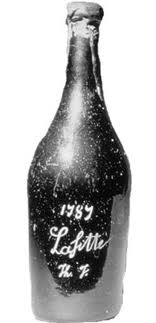 adversely affected if the e-consumer was not able to trust the e-seller?
adversely affected if the e-consumer was not able to trust the e-seller?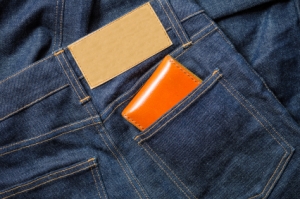 Having now completed discovery, you have provided the client with a thorough assessment of its potential liability exposure in the case. You are set for trial.
Having now completed discovery, you have provided the client with a thorough assessment of its potential liability exposure in the case. You are set for trial. In
In  When a scientist or physician signs on as a litigation expert, he opens himself up to scrutiny, not only about the bases for his opinion but also, to the extent permitted by law, his personal biases and professional background. In accepting a fee for service, the expert tacitly agrees to submit to intensive scrutiny.
When a scientist or physician signs on as a litigation expert, he opens himself up to scrutiny, not only about the bases for his opinion but also, to the extent permitted by law, his personal biases and professional background. In accepting a fee for service, the expert tacitly agrees to submit to intensive scrutiny.  The application of
The application of